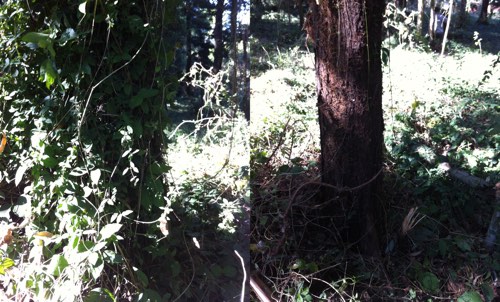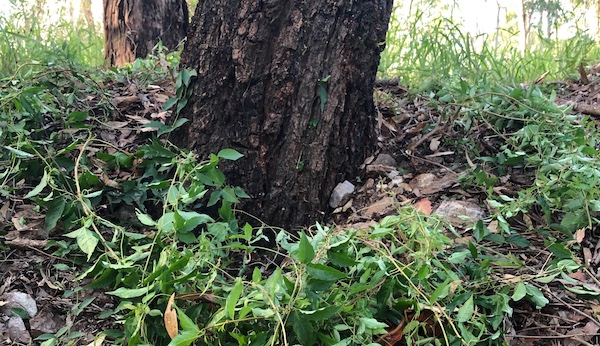This summer I have been controlling Cat’s Claw Creeper (Dolichandra unguis-cati) near the top of Wellers Hill which is inside Weller Road Park. There are at least four infestations in the park but the worst can be found on the access road to the reservoir.
This plant is regarded as serious environmental weed because, if unchecked, it can rapidly climb even mature trees and cover their canopies. It can smother trees or cause branches to break in high winds or rainfall events. Cat’s Claw can affect quite a large area and can thus severely impact an ecosystem. If allowed to flower the plant produces many seeds which are easily dispersed by wind.

I first started controlling Cats Claw back in 2012 while helping with the Belmont Hills Conservation Group. In those days, I only stripped the vines from tree trunks while others did poisoning, removal and monitoring.
Treatment is difficult for a number of reasons. First, the vines cling tenaciously to the trunk of the host tree. Physical removal of these vines is tricky because of sharp spines. Such removal is only a short-term measure since Cats Claw can re-grow quickly from large underground tubers. Second, the same tubers also act as buffers to attempts to poison the plant. So one control method is to first apply a very concentrated herbicide through stem scrapping and spraying over intact foliage. Third, follow-up monitoring is important in order to discover re-growth from underground tubers (sometimes deep) which were missed on earlier attempts. This process can take years to be effective.
